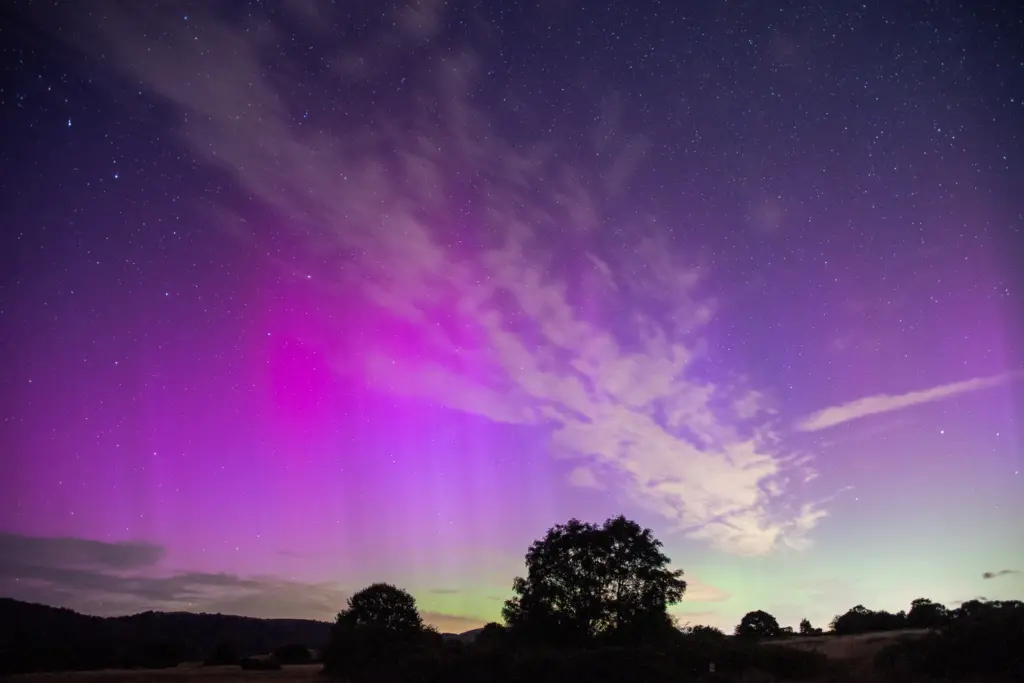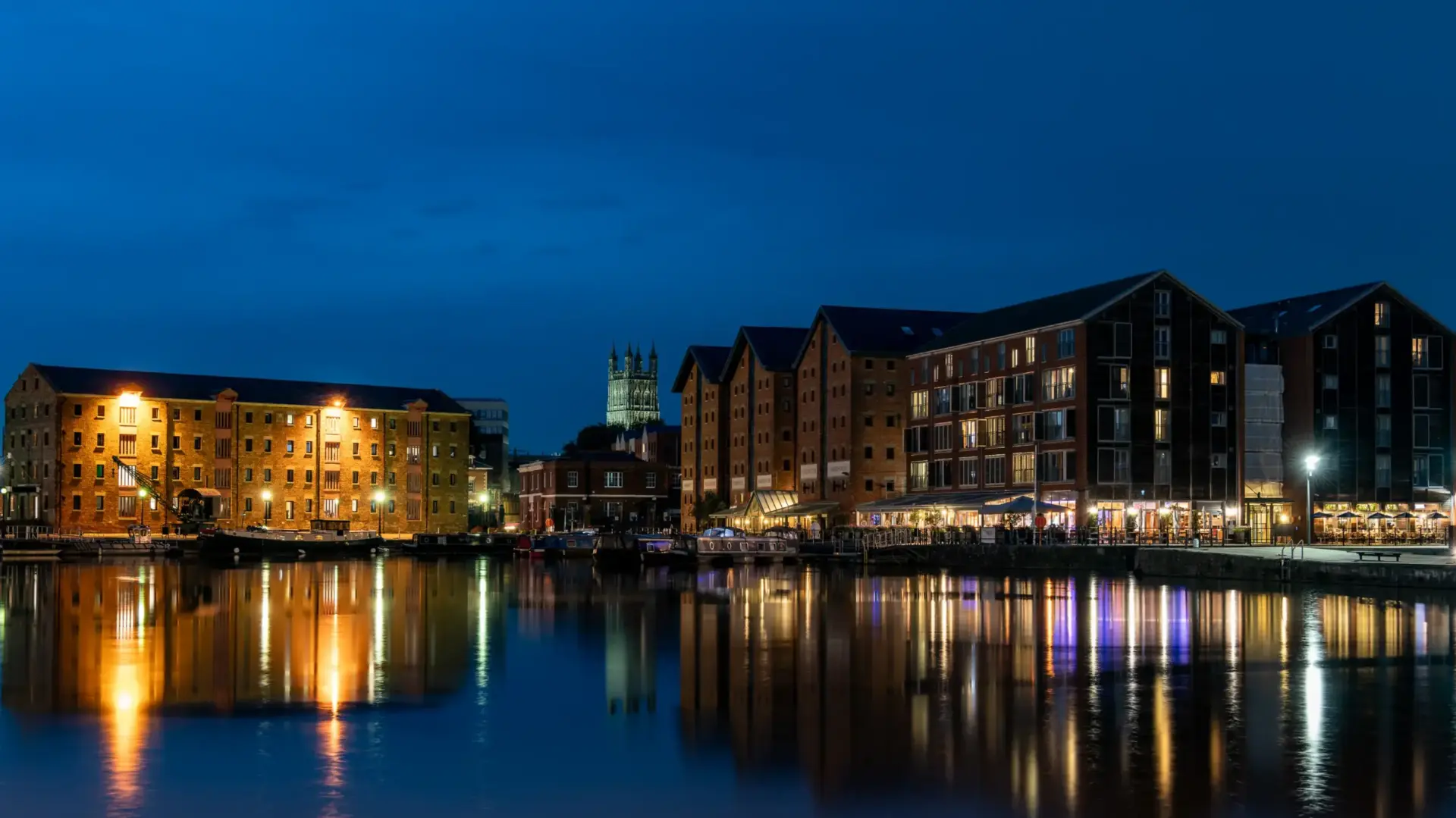Photography has an innate way of surprising us. It’s that insatiable chase for beauty mixed with the unpredictability of nature that keeps us captivated. And sometimes, nature offers surprises we couldn’t dare to anticipate. That’s exactly what happened to me one extraordinary night in Golden Valley, nestled near the Malvern Hills.
The Night I Chased the Milky Way
The plan was simple. I headed out with my camera, tripod, and a thermos of tea, aiming to capture the Milky Way arching gracefully over the rural beauty of Golden Valley. Known for its low light pollution, the area serves as a haven for astrophotography enthusiasts like myself.
I set my sights on framing the silhouetted trees against the deep, star-studded night. The setup was ready, and the conditions seemed perfect. Then, something truly breathtaking happened.
An Unexpected Display of the Aurora Borealis
Suddenly, the night sky came alive, painting strokes of green and purple across its vast black canvas. The aurora borealis, a sight more often associated with the far north, made an unannounced appearance. My planned shots of the Milky Way were instantly forgotten as I scrambled to adjust my camera settings, heart pounding with excitement.

The aurora stretched horizontally across the sky, hovering just above the horizon. Wisps of clouds danced among the vibrant colors, blending seamlessly into the ethereal scene. The world felt still, as though nature herself was inviting me to savor every fleeting second.
The Technical Dance of Capturing Magic
Capturing the aurora borealis demands a balance of preparation and quick thinking. While I’d set up for the Milky Way, the sudden shift required me to adjust on the fly. If you’re wondering how to photograph such a phenomenon in case you’re lucky enough to stumble upon it, here’s a breakdown of what worked for me that evening:
- Shutter Speed: I opted for a longer exposure, around 20 seconds, to capture the rich details and motion of the aurora. However, I stayed mindful of not overexposing, preserving the pinpoint clarity of the stars.
- Aperture: My lens was wide open at f/2.8, allowing as much light as possible to hit the sensor.
- ISO: I balanced a high ISO (around 800) to pick up faint light without introducing too much noise. Post-processing can handle mild grain, but the aurora’s natural vibrance needs to shine through untouched.
- Tripod and Remote Shutter: Predictably, a steady base and remote shutter release were essential to avoid camera shake during long exposures.
Though the aurora was unexpected, preparation and knowledge were my allies that night.
Golden Valley’s Quiet Magic
What makes Golden Valley such a perfect backdrop for an experience like this? Its serene landscapes, silhouetted by clusters of trees, offer clean, uninterrupted views of the heavens. While many picture the Malvern Hills as a place to explore during the day, it’s at night that its true magic unfolds. The absence of urban light pollution is a gift to photographers, creating the ideal canvas for celestial wonders.
This surprise showing of the aurora borealis wasn’t just a visual marvel; it was also a reminder of the power of nature to surprise and humble us.
Lessons From an Unplanned Adventure
This image captured at Golden Valley represents more than just a photograph of lights and colors. It’s a story of being present, ready, and open to the unexpected. As photographers, we often obsess over forecasts, plans, and settings. But sometimes, it’s about being there and saying “yes” to the moment when something extraordinary unfolds.
If you’re passionate about photography, I encourage you to venture out to places like Golden Valley. Pack your gear, put in the scouting hours, and prepare for the shot you’ve planned. But always leave room for the unexpected. Even if the aurora doesn’t make an encore appearance, you’ll find beauty worth capturing under those starlit skies.
And who knows? Maybe one day, you might stumble upon your own moment of magic, just like I did.

